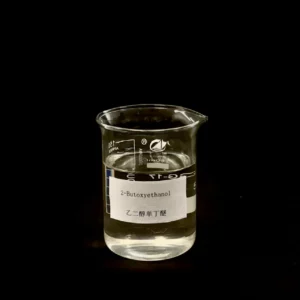Inorganic chemicals play crucial roles in various industries, contributing to advancements and innovations in pharmaceuticals, agriculture, electronics, and many other sectors.
Here’s how they contribute to these industries:
- Pharmaceuticals:
- Catalysts and Reagents: Inorganic chemicals serve as catalysts or reagents in the synthesis of pharmaceutical compounds. For instance, metal catalysts like palladium or platinum are used in drug synthesis.
- Diagnostic Agents: Certain inorganic compounds, such as contrast agents used in imaging (like gadolinium-based agents), play a vital role in diagnostic medicine.
- Medicinal Applications: Inorganic compounds like certain metal complexes or salts are utilized in medicines and treatments for specific medical conditions.
- Agriculture:
- Fertilizers: Inorganic chemicals, particularly compounds containing nitrogen, phosphorus, and potassium (NPK), are essential components of fertilizers, providing nutrients for plant growth.
- Pesticides and Herbicides: Inorganic compounds are used in the production of pesticides and herbicides that help control pests and weeds in agriculture.
- Electronics:
- Semiconductor Materials: Inorganic chemicals are integral in the production of semiconductor materials used in electronic devices. Silicon (Si) and compounds like gallium arsenide (GaAs) are vital for electronic component fabrication.
- Display Technologies: Inorganic compounds contribute to display technologies, such as liquid crystal displays (LCDs) and light-emitting diodes (LEDs).
- Catalysts for Electronics Production: Inorganic catalysts are used in the manufacturing processes of electronic devices.
- Construction and Building Materials:
- Cement and Concrete Production: Inorganic chemicals, particularly compounds like Portland cement (containing calcium, silica, alumina, and iron), Inorganic chemical manufacturers are essential in construction materials.
- Glass and Ceramics: Compounds like silica (SiO2) are critical in the production of glass and ceramics used in construction and various industries.
- Environmental Remediation:
- Water Treatment: Inorganic chemicals, such as aluminum sulfate or chlorine compounds, are used in water treatment processes to purify water for drinking or industrial use.
- Air Pollution Control: Certain inorganic compounds are utilized in air pollution control systems to mitigate harmful emissions.
In each of these industries, the unique properties and diverse applications of inorganic chemicals contribute significantly to technological advancements, product development, and the improvement of processes, ultimately impacting various aspects of daily life and global economies.
What are the effects of temperature or pressure on the reactivity of certain inorganic chemicals?
The effects of temperature and pressure on the reactivity of inorganic chemicals can vary widely depending on the specific compound or reaction involved.
However, some general trends and effects can be observed:
- Temperature:
- Increased Reactivity: Higher temperatures often increase the rate of reaction for many inorganic compounds. Elevated temperatures provide reactant molecules with more kinetic energy, leading to increased collision frequency and higher chances of successful collisions, thus accelerating reaction rates.
- Thermal Decomposition: Some inorganic compounds might undergo decomposition or degradation at higher temperatures, leading to changes in their reactivity or the formation of different products.
- Activation Energy: Elevated temperatures can lower the activation energy required for certain reactions, facilitating the breaking of chemical bonds and promoting reaction pathways that might not occur at lower temperatures.
- Pressure:
- Effect on Equilibrium Reactions: Altering pressure can influence the equilibrium of reactions involving gaseous reactants or products, following Le Chatelier’s principle. Changes in pressure might shift the equilibrium toward the formation or consumption of specific products depending on the stoichiometry of the reaction.
- Changes in Reaction Rate: For reactions involving gases, changes in pressure can impact the reaction rate by altering the concentrations of gaseous reactants. This is particularly important for gas-phase reactions where changes in pressure affect the number of molecules available for collisions.
- Catalytic Reactions:
- Some inorganic catalysts might exhibit altered catalytic activity at different temperature or pressure conditions, affecting their efficiency in promoting specific reactions.
- Phase Changes:
- Variations in temperature and pressure can induce phase changes in certain inorganic compounds, transitioning between solid, liquid, or gaseous states. These phase changes might affect the accessibility of reactants and influence reaction kinetics.
- Chemical Equilibrium:
- Temperature and pressure can influence the position of equilibrium in reversible reactions involving inorganic compounds, affecting the concentrations of reactants and products at equilibrium.
Understanding the effects of temperature and pressure on the reactivity of specific inorganic compounds is crucial for optimizing reaction conditions, predicting reaction pathways, and controlling the selectivity of chemical processes in various industries, including manufacturing, research, and environmental applications. Experimental studies under controlled conditions help elucidate these effects for specific reactions and compounds.
